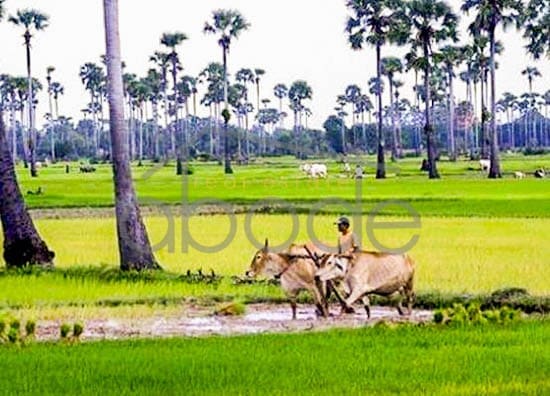The centre of Cambodia is where Kampong Chhnang province borders Kampong Thom, Kampong Cham, Kampong Speu, and Pursat each located to the north, east, south, and west, respectively.
This province is conveniently located about 91 kilometres from Phnom Penh and is situated in the rich and nearly perpetually moist central region of Cambodia.
Due to its proximity to the Tonle Sap Lake, Kampong Chhnang is mostly a fishing and rice-planting community.
The provincial capital (with the same name) and a pleasant river port town that is worth a visit, is particularly fisheries-focused and has a large fishery port.
It is conveniently accessible from Phnom Penh by National Road Number 5, which passes by Udong, the historic capital.
You can also choose to travel to Kampong Chhnang via air-conditioned bus, which wasn’t previously an option.
Additionally, the town offers a good number of accommodations to stay the night and a few good restaurants to eat.
There are also some lovely attractions to see.
You are transported to the provincial town by bullet boats from Siem Reap and Phnom Penh via gorgeous countryside along the Tonle Sap.
To explore the Tonle Sap River area around the town, you can also choose to rent a motorized boat if you’re interested.
They cost between US$8 and 4,000 riel per hour, or you may hire one of the small, non-motorized boats to take you on a quieter tour.
The locals gather there for early-evening social hour and to stroll along the new riverwalk. It’s the place to be seen on Friday and Saturday nights.
Kampong Chhnang, forgotten, outlying, expanding
According to World Bank’s 2017 report ‘Urban Development in Phnom Penh’, successful economies have high levels of urbanisation.
21% of the people here are already living in urban areas.
By 2050 this is expected to rise to 36%.
The country’s rate of urbanisation is lower than expected for its GDP and it is expected to rise as countries with a similar GDP (Bangladesh and Kyrgyzstan) have rates closer to 35%.
Phnom Penh has seen significant growth and now has 2 million residents, making it the largest and fastest growing city in the country, serving as a gateway to the global economy.
The need for robust urban planning to mitigate growing congestion is becoming more critical in this fast-changing city.
So, it comes as no surprise that locations like Kampong Chhnang are often overlooked when buying or renting are getting more attention.
Cambodia’s projected population growth, gentrification and foreseeably ongoing foreign investment offer virtually unparalleled opportunities.
It is probably a good time to look before everyone sees.
Good guide to investing in Cambodia
Here is a good guide to investing in Cambodia that is intended to help you steer you away from total financial disaster.
The real estate market here is extremely varied, more so than most countries, which can make investing either a smooth, hassle-free journey or a potemntially rocky one.
What separates a successful from unsuccessful investor is not pure luck, as many think, but the ability to recognise and avoid mistakes.
My 2nd home program
Cambodia my 2nd home (CM2H) is an innovative initiative recently launched by KHCA (Khmer Home Charity Association) in association with the Ministry of Interior (MOI).
Its aim is to help foreign nationals enjoy a series of measures to facilitate sustainable living and business in Cambodia.
There are many benefits for participants in the Cambodia in my 2nd home program.
They include – a 10-year unlimited entry / exit visa and, after 5 years, they are eligible to apply for a Cambodian passport and enjoy the advantages of the dynamic ASEAN network.





